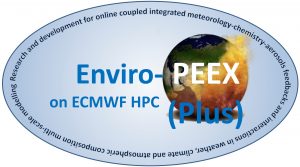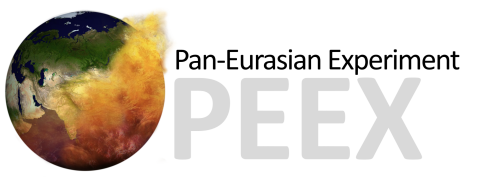Project Description

The Enviro-PEEX(Plus) on ECMWF HPC project, led by the University of Helsinki, was successfully completed. The project entitled “Research and development for integrated meteorology – atmospheric composition multi-scales and – processes modelling for the Pan-Eurasian EXperiment (PEEX) domain for weather, air quality and climate applications” (https://www.atm.helsinki.fi/peex/index.php/enviro-peex_plus) was realised during 2021-2023 with final reporting to ECWMF in 2024 (note, annual status/ progress reports are available at https://www.ecmwf.int/en/research/special-projects/spfimahu-2021).
The Enviro-PEEX(Plus) project overall objectives focused on analysis of the meteorology-chemistry-aerosols interactions and feedback and on provision of a way for development of efficient techniques for online coupling of weather prediction and atmospheric chemical transport via process-oriented parameterizations and feedback algorithms. Which all will help to improve the numerical weather prediction, climate and atmospheric composition forecasting in the PEEX domain. The project focused on modelling and analysis for: case studies with physical and chemical weather downscaling forecasting to evaluate sensitivity of aerosol effects on meteorology, atmospheric composition and climate; episodes for weather, climate and air quality applications to evaluate possible effects; and testing parameterizations, meteorological and chemical initial and boundary conditions, etc.
In particular, these included the implementation of concept “The Pan-Eurasian Experiment Modelling Platform (PEEX-MP)”; and a series of studies: 1) Sensitivity of local meteorology vs. land-cover changes in the Arctic; 2) Atmospheric boundary layer regimes over land and water surfaces; 3) Mapping long-term environmental changes and ecosystem response to anthropogenic and natural impacts; 4) Temperature-humidity-wind regimes in the atmosphere over the mountains; 5) Modelling processes of multi-dispersed dust transport on technogenic mining objects; 6) Integrated modelling and analysis of influence of land cover changes on regional weather conditions/ patterns; 7) Integrated modelling for assessment of potential pollution regional atmospheric transport as result of accidental wildfires; 8) High-resolution integrated urban environmental modelling; 9) Effects of spring air pollution and weather on covid-19 infection in Finland; 10) Enviro-HIRLAM meteorology for FLEXPART atmospheric trajectory calculations. The list of resulted publications/reports is included in the project final report.
Moreover, the Enviro-HIRLAM model was also used for science education during Young Scientists Schools (YSS). In particular, the online YSS MEGAPOLIS-2021 on “Multi-Scales and -Processes Integrated Modelling, Observations and Assessment for Environmental Applications” (https://peexhq.home.blog/2021/12/15/megapolis-2021-school) in Memory of Prof. Sergej Zilitinkevich (1936-2021) took place during 15 Nov – 3 Dec 2021. This YSS introduced young generation of researchers to special topics in atmospheric and environmental sciences, Earth system modelling approaches and applications, especially considering transport and fate of small (micro) particles. During the school, participants learnt about the current progress and challenges in Earth system research; meteorological, hydrological and atmospheric composition modelling and observations (including ground-based and remote-sensing); and modern technologies for environmental studies and assessments (including health impacts). Another example is the hybrid YSS on “Socio-Environmental Interactions in Sustainable Smart Cities” (https://peexhq.home.blog/2023/11/08/ursa-major-yss). This YSS included a series of theoretical lectures as well as work in groups (so-called lines – Natural, Turbulence, Satellite, and Social) with introduced different tools, models, and methods. In particular, for the Enviro-HIRLAM, these included lecturing on seamless modelling and Enviro-HIRLAM small-scale research projects (SSRPs) with focus on analysis of urban scale modelling results: i.e., impact of urban areas on meteorology and pollution patterns.
The expected application areas and expected results are for improving: 1) coupling of aerosols and chemistry aiming towards better description of aerosols and relevant microphysical processes, and their effect on radiative fluxes and clouds; 2) understanding and ability in prediction of chemical and physical processes related to the formation and growth of atmospheric particles; 3) weather prediction with short-term feedbacks of aerosols and chemistry on meteorological variables; and 4) atmospheric composition forecasting with two-way feedbacks between aerosols/chemistry and meteorology.
Text by Dr. Alexander Mahura, INAR – Univeristy of Helsinki, Finland
